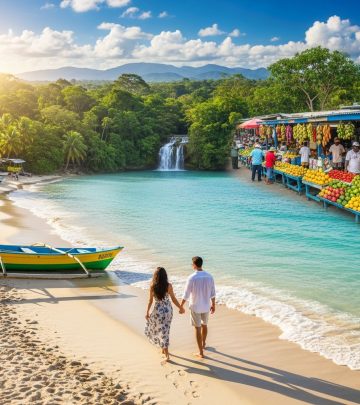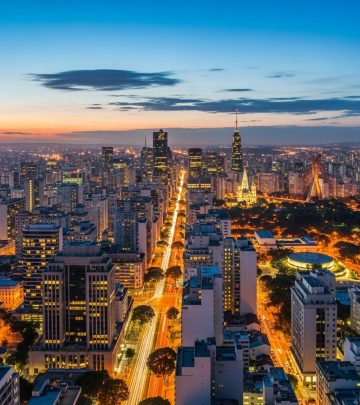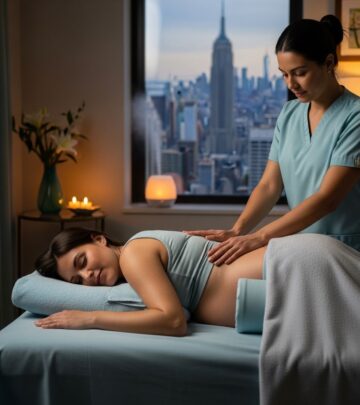Gyeongsangbuk-do: Experience Korea’s Serene Heritage Villages and Simple Life
Explore the timeless villages, gentle landscapes, and rich traditions of Gyeongsangbuk-do for a meaningful escape into Korea’s enduring heritage.

Gyeongsangbuk-do: Where Korea’s Past Lives On
Far from the modern bustle of Seoul or Busan, Gyeongsangbuk-do invites travelers to embrace Korea’s timeless countryside, where tradition, tranquility, and heritage shape daily life. This region, also called North Gyeongsang Province or Gyeongbuk, is revered as one of the cradles of Korean culture. Visiting here means slowing down and discovering a simpler way of life maintained by proud communities across picturesque villages and landscapes.
From ancient hanok homes nestled among flower-filled gardens to farmland cultivated for generations, Gyeongsangbuk-do’s villages reveal how Korean traditions have endured, inviting guests to not only observe but immerse themselves in the rhythms of the past.
Why Gyeongsangbuk-do for Slow Travel?
- Preserved Villages: Experience centuries-old hanok houses and heritage compounds still maintained by descendants of elite clans.
- Cultural Immersion: Participate in traditional activities—from crafts to local cuisine—in authentic rural settings.
- Natural Beauty: Enjoy mountain backdrops, bamboo forests, river valleys, and gardens that nurture peace and reflection.
- Simplicity & Serenity: Escape the rush and reconnect with the gentle pace of village life.
A Step Back into History: Heritage Villages of Gyeongbuk
Gyeongsangbuk-do’s countryside is dotted with villages where Korea’s privileged families (the Yangban) crafted elaborate compounds surrounded by farms and hills. Today, many of these villages are lovingly preserved, representing living museums where heritage and nature harmonize.
This journey highlights two such villages—Hangae Folk Village in Seongju, and the Saudang Head House in Yundong Village, Gunwi. Both invite guests to stay overnight, enjoy immersive experiences, and appreciate enduring traditions in bucolic settings.
Hangae Folk Village: Living Heritage Amid Mountains
Set against the forested slopes of Yeongchwisan Mountain, Hangae Village welcomes you into a living tapestry of Korean history. For over 500 years, the descendants of the Seongsan LEE Clan have preserved this haven of tradition.
The village encompasses:
- 75 Hanok Houses: All continue to follow ancestral feng shui, harmonizing with nature’s contours.
- Designated Cultural Assets: Ten hanok homes, built between the late 18th and early 19th centuries, are officially protected for their historic value.
- Bamboo Forests & Flower Gardens: Meticulously tended, these spaces enhance the sense of peace and beauty.
Inside a hanok, guests encounter:
- Traditional Furnishings: Bedrooms with wood floors, paper doors (jangji), and low tables reflect historic living.
- Seasonal Design: The placement of rooms, courtyards, and features considers wind, sun, and landscape, ensuring comfort through Korea’s seasons.
Staying here means waking to soft mountain light, eating local specialties, and participating in cultural activities led by villagers eager to share their customs.
Immersive Experiences in Hangae Village
- Hanok Guesthouse Stay: Sleep in historic hanok homes, maintained by clan descendants.
- Traditional Crafts: Try making paper lanterns, weaving, or calligraphy in open-air pavilions.
- Korean Cuisine: Share meals featuring regionally sourced ingredients and methods unchanged for centuries.
- Nature Walks: Wander through flower gardens, along the river, or into the nearby bamboo forest.
Yundong Village & Saudang Head House: Tranquil Tradition at the Mountains’ Foot
A short drive from Hangae lies Yundong Village, nestled between Kkachisan and Yeonbisan Mountains. Here, time slows further as visitors step into the grounds of the Saudang Head House, home of the Kim Clan for over 600 years.
The Saudang Head House, registered as Gyeongsangbuk-do Cultural Heritage Material No. 561, comprises:
- Seven Hanok Houses: Preserved and still occupied by the Kim Clan, maintaining architectural and spiritual authenticity.
- Wildflower Gardens: Lush with native blooms and trees for quiet contemplation.
The head house stands as a monument to sustained heritage—a living archive where generations continue to honor original customs, furnishing, rituals, and landscape stewardship.
Experiencing Saudang Head House
- Heritage Tours: Guided visits explain the history, architecture, and legacy of particular families and the role of yangban in Korean society.
- Garden Meditation: Stroll or rest among the wildflowers and old trees, letting the natural stillness refresh your spirit.
- Seasonal Festivals: Plan your visit to coincide with local harvests or ancestral rites for unique insights into living traditions.
The Significance of Hanok Architecture
Hanoks are emblematic of Korea’s architectural heritage. Key features include:
- Wood, Stone, and Clay: Natural building materials adapted for Korea’s climate.
- Ondol Heating: Underfloor heating fueled by wood fires, providing warmth and comfort in winter.
- Open Courtyards: Spaces for family gatherings, rituals, and relaxation.
- Orientation & Feng Shui: Houses and rooms are carefully positioned to harness landscape energy, light, and seasonal breezes.
Cultural Rhythms: Life in Gyeongbuk Villages
Gyeongsangbuk-do villages maintain time-honored ways of living. Guest experiences often include:
- Slow Countryside Pace: Days unfold with farming, cooking, crafting, and community events.
- Seasonal Activities: Rice planting, wildflower walks, and harvest festivals highlight the connection between people and land.
- Traditional Cuisine: Meals are built around local ingredients. Try Andong jjimdak (braised chicken with potatoes and noodles), spicy sikhye (sweet rice drink), and ureongi ssambap (rice wraps with snails).
- Interactive Events: Learn to make kimchi, tie ceremonial knots, or participate in tea rituals.
Natural Beauty: Landscapes that Soothe the Soul
Surrounding every village are vistas that promote reflection and relaxation. Seek these highlights:
- Yeongchwisan Mountain: Mahogany forests and hiking trails.
- Bamboo Groves: Shaded walkways filled with birdsong.
- East Coast Beaches: Feel powerful waves and fresh sea breezes on walks along the coast.
- River Valleys: Sparkling streams nourished by mountain rains.
| Village | Highlights | Best For |
|---|---|---|
| Hangae Folk Village | Hanok stays, flower gardens, bamboo forest, clan heritage | Architecture lovers, families, cultural immersion |
| Yundong Village (Saudang Head House) | Historic hanok complex, wildflower gardens, ancestral rites | History enthusiasts, spiritual retreats, slow travelers |
Planning Your Visit: Tips for Travelers
- Reserve Early: Hanok guesthouses are limited, so book well in advance.
- Respect Tradition: Many villages ask guests to observe quiet hours and dress modestly.
- Pack for the Weather: Summers can be hot; spring and autumn are ideal for outdoor exploration.
- Connect Locally: Engage with resident guides for deeper cultural insights.
- Bring Cash: Some rural locations have limited card acceptance.
Frequently Asked Questions (FAQs)
Q: Can I stay overnight at hanok houses in these villages?
A: Yes, several hanok guesthouses in Hangae and Yundong Village welcome overnight guests. Rooms feature traditional layouts and furnishings for cultural immersion.
Q: What traditional activities can visitors experience?
A: Guests can join craft workshops, local cooking lessons, tea ceremonies, and guided village history tours, depending on the season and host availability.
Q: Is English widely spoken in Gyeongsangbuk-do’s rural villages?
A: English is not widely spoken; however, many guesthouses offer basic communication assistance and guided experiences in English. Learning a few Korean phrases is appreciated by hosts.
Q: What are the must-try local foods?
A: Regional specialties include Andong jjimdak (braised chicken and noodles), sikhye (sweet rice drink, often spiced), and ureongi ssambap (rice wraps with freshwater snails).
Q: When is the best time to visit?
A: Spring and autumn offer the most comfortable weather and vibrant scenery, though each season brings unique activities and festival opportunities.
Beyond the Village: Other Sights in Gyeongsangbuk-do
- Gyeongju: South Korea’s ancient capital, famed for UNESCO World Heritage sites including Bulguksa Temple and Seokguram Grotto.
- Andong Hahoe Village: A globally recognized folk village with preserved architecture and living traditions.
- Ulleungdo Island: Remote island for adventurers with dramatic cliffs and clear sea views.
- Haeparang-gil Trail: Scenic walking route along the east coast, ideal for hikers.
Conclusion: Embracing the Simple Life
Gyeongsangbuk-do offers a gentle invitation to experience Korea’s cultural heart—not as a spectator, but as a participant. By stepping into heritage villages, exploring hanok homes, and engaging with local customs, travelers reconnect with timeless rhythm and beauty.
For those seeking a deeper, meaningful journey—one defined by slow mornings, enduring traditions, and the hospitality of Korea’s rural heart—Gyeongsangbuk-do delivers an unforgettable escape into a simple, serene life.












